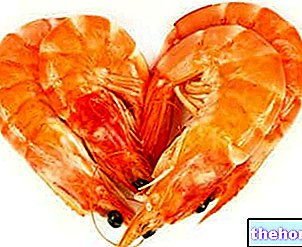Carbohydrates, also (improperly) called carbohydrates, are chemicals composed of carbon, hydrogen and oxygen, and can be defined as aldehyde and ketone derivatives of polyvalent alcohols.
Functionality
.jpg)
Need
Since the organism has the ability to synthesize carbohydrates from other nutrients, carbohydrates cannot properly be considered essential nutrients; however, there is a need to maintain the blood sugar level within a range of values adequate to the needs of the central nervous system and erythrocytes. (Red blood cells).
The total recommended intake of carbohydrates is around 40-60% of the total energy. However, consumption of simple sugars should not exceed 10-12% of total calories. In fact, added simple sugars only provide energy, while foods containing complex carbohydrates - in addition to providing slower-release energy than simple ones - also provide other fundamental nutrients to the general balance of the diet. This aspect is relevant especially in the case in which it is necessary to keep the global energy intake within relatively modest limits, as also required by the current lifestyle based on an average sedentary lifestyle.
Chemistry of carbohydrates and food sources
They are chemicals composed of carbon, hydrogen and oxygen and can be defined as aldehyde and ketone derivatives of polyvalent alcohols. In relation to their complexity they are classified into:
1) Monosaccharides: they contain from 3 to 9 carbon atoms and are the simplest structures belonging to the family of carbohydrates. Monosaccharides of biological importance include glucose, fructose and galactose. Glucose is scarcely present in nature, apart from very small amounts in fruit and vegetables.Fructose is present as such in fruit and honey.
2) Disaccharides: they can be considered as the union of two molecules of monosaccharides linked together by glycosidic bonds. The disaccharides of biological importance include sucrose, lactose and maltose. Sucrose is composed of glucose and fructose and is found in fruit, especially in beets and cane, from which it is extracted to produce table sugar. Lactose is contained in milk and is made up of glucose and galactose. Maltose (glucose and glucose) comes from the fermentation (or digestion) of "starch.
3) Oligosaccharides: the term oligosaccharides is generally used for compounds formed from 3 to 10 monosaccharides. The family of oligosaccharides includes sugars such as raffinose, stachyose and verbascose that are not digestible by man, composed of galactose, glucose and fructose and contained mainly in legumes. The production of gas following the fermentation of these sugars in the large intestine explains the meteorism caused above all in some subjects by the consumption of leguminous products.
4) Polysaccharides: the term polysaccharides is generally used for compounds formed by more than 10 monosaccharides. Starch constitutes the reserve (energy) polysaccharide of the plant world. The main sources of starch are cereals (bread, pasta, rice) and potatoes. It is present in the form of granules with a semi-crystalline structure: cooking alters this structure (gelatinization process), making the starch digestible; on the contrary, the cooling of the food, which leads to partial phenomena of recrystallization of the starch, partially reduces its digestibility.
Glycogen, on the other hand, is a polysaccharide carbohydrate of animal origin. It is therefore found in meat foods (horse meat, liver), but its content is devoid of nutritional significance as it is present in minimal quantities: after the death of the animal, glycogen is in fact rapidly transformed into lactic acid due to anoxia ( absence of oxygen).




























